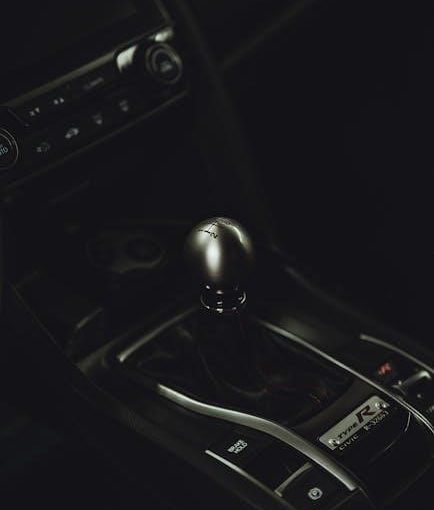A manual transmission wagon offers a unique driving experience, combining versatility with precise control. Historically popular for their performance and efficiency, these vehicles provide a connection between driver and machine, making them ideal for both daily commuting and adventurous journeys. Their enduring appeal lies in the blend of practicality and engagement, catering to a wide range of driving preferences and conditions.
What is a Manual Transmission Wagon?
A manual transmission wagon is a vehicle equipped with a manual gearbox, offering drivers precise control over gear shifts and acceleration. It combines the functionality of a wagon, with its spacious cargo area and versatility, with the engaging driving experience of a manual transmission. Unlike automatics, manual wagons require the driver to operate a clutch pedal and shift gears manually, providing a more interactive connection to the vehicle. This setup is often praised for its fuel efficiency, lower ownership costs, and superior control, especially in varying driving conditions. Manual wagons are popular among enthusiasts who value performance and driver involvement, making them a timeless choice for both practicality and enjoyment.
History and Evolution of Manual Transmission Wagons
The history of manual transmission wagons traces back to the early 20th century, when manual gearboxes became standard in vehicles. Wagons, initially designed as practical, spacious vehicles, adopted manual transmissions to enhance control and efficiency. Early models, such as the Ford Model T, introduced affordable manual transmissions, making wagons accessible to the masses. Over the decades, manual wagons evolved with advancements in engineering, featuring improved gear systems and clutch mechanisms. By the mid-20th century, they became popular among families and adventure seekers alike, blending practicality with driving engagement. Despite the rise of automatics, manual wagons maintained a loyal following, cherished for their timeless appeal and driver-centric experience.
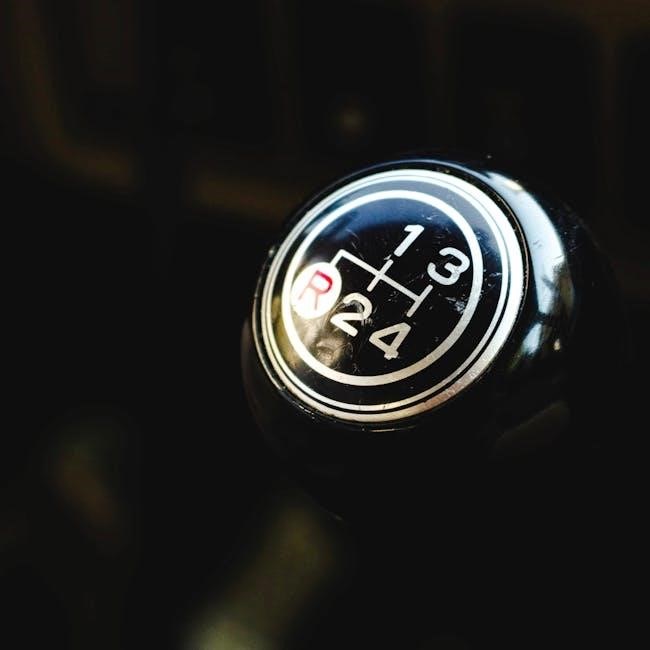
Benefits of Manual Transmission Wagons
Manual transmission wagons offer enhanced fuel efficiency, lower costs, and superior driver engagement, making them a practical and enjoyable choice for both daily use and long trips.
Fuel Efficiency and Cost-Effectiveness
Manual transmission wagons are renowned for their superior fuel efficiency and cost-effectiveness. With fewer mechanical components compared to automatic transmissions, they often achieve better mileage, reducing fuel costs over time. Additionally, manual transmissions typically require less complex engineering, leading to lower purchase prices and maintenance expenses. This makes them a practical choice for budget-conscious drivers. The ability to control gear shifts manually allows for optimized acceleration and deceleration, further enhancing fuel economy. Overall, manual transmission wagons provide a cost-effective solution for those seeking a reliable and economical vehicle without compromising on performance.
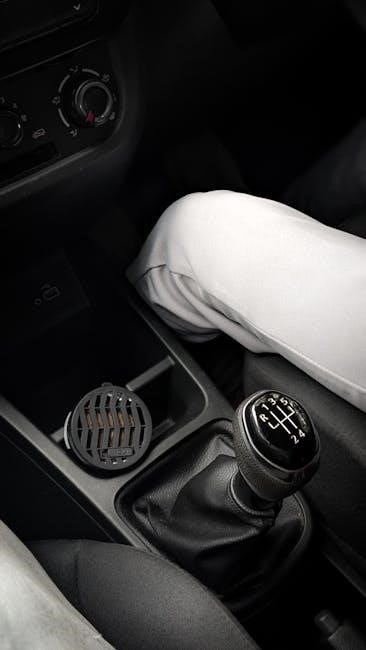
Driver Engagement and Control
Manual transmission wagons foster a deeper connection between the driver and the vehicle, offering unparalleled control and engagement. The physical act of shifting gears and using the clutch creates a sense of involvement, making every drive feel intentional and immersive. This hands-on approach allows drivers to tailor their acceleration and deceleration to suit various driving conditions, enhancing precision and responsiveness. The need to actively manage gears also heightens situational awareness and reflexes, making the driving experience more dynamic and rewarding. For enthusiasts, this level of control and interaction is a key factor in the enduring appeal of manual transmission wagons.
Longevity and Durability
Manual transmission wagons are often praised for their longevity and durability, making them a reliable choice for long-term ownership. With fewer complex components compared to automatic transmissions, manual systems are less prone to mechanical failure, reducing repair costs over time. Regular maintenance, such as clutch replacement, is relatively straightforward and cost-effective, extending the vehicle’s lifespan. Additionally, the absence of advanced electronics in manual transmissions reduces the risk of system failures, further enhancing reliability. When properly cared for, these wagons can withstand years of rigorous use, making them a practical option for drivers seeking a durable and long-lasting vehicle.

Driving Techniques for Manual Transmission Wagons
Mastering clutch control, smooth gear shifts, and adapting to conditions enhances the driving experience. Proper techniques ensure efficient performance and minimize wear on the transmission system.
Mastering the Clutch and Accelerator
Mastering the clutch and accelerator is essential for smooth operation of a manual transmission wagon. The clutch pedal should be pressed fully before shifting gears to avoid grinding. Gradually release the clutch while accelerating to ensure smooth transitions. Proper synchronization between the clutch and accelerator prevents jerky movements and reduces wear on the transmission. When starting on an incline, use the clutch and accelerator carefully to maintain control. Avoid riding the clutch, as this can overheat and damage the clutch system. Practice in a safe environment to develop muscle memory and coordination, ensuring a comfortable and efficient driving experience.
Shifting Gears Smoothly
Shifting gears smoothly in a manual transmission wagon requires coordination between the clutch, accelerator, and gearshift. Press the clutch fully before shifting to avoid grinding gears. Listen to engine RPMs to determine the optimal shift point, ensuring smooth acceleration. Guide the gearshift firmly but gently into each gear, avoiding forced movements. Use the correct gear for your speed and terrain to maintain control and efficiency. Practice shifting in a safe, open area to develop muscle memory. Smooth shifting reduces wear on the transmission and enhances the driving experience. Proper technique prevents abrupt stops or jerky accelerations, making driving more comfortable for both the driver and passengers.
Driving in Various Conditions
Manual transmission wagons excel in diverse driving conditions due to their precise control. On steep inclines, downshifting before ascending helps maintain speed and avoids strain on the engine. In snowy or icy conditions, gradual acceleration and early shifting reduce wheel spin and improve traction. When towing or carrying heavy loads, lower gears provide better control and stability. For urban driving, smooth clutch engagement and timely shifting ensure seamless navigation through traffic. On winding roads, quick and deliberate gear changes enhance agility and responsiveness. Proper technique in each scenario ensures safety and efficiency, making manual transmission wagons adaptable to any environment.
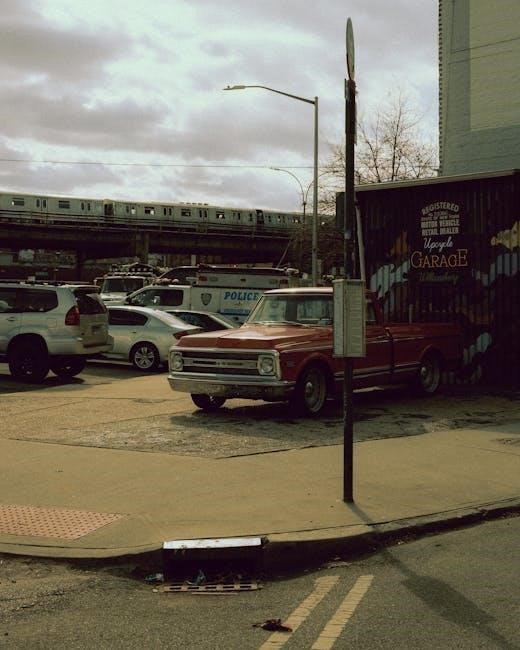
Maintenance and Care
Regular inspections, fluid checks, and proper driving techniques are essential for prolonging the life of a manual transmission wagon, ensuring optimal performance and reliability over time.
Regular Servicing and Checkups
Regular servicing and checkups are vital for maintaining the health of a manual transmission wagon. This includes inspecting the clutch, gearbox, and transmission fluid. Mechanics should also check for wear on components like the clutch pedal and gear linkages. Ensuring the transmission fluid is clean and at the correct level is crucial for smooth operation. Additionally, listening for unusual noises during acceleration can help identify potential issues early. A well-maintained manual transmission wagon performs efficiently, reduces the risk of breakdowns, and extends its lifespan. Regular servicing also helps in maintaining fuel efficiency and overall driving experience.
Transmission Fluid and Filter Replacement
Transmission fluid and filter replacement are critical for maintaining the health of a manual transmission wagon. The fluid lubricates gears and prevents overheating, while the filter ensures cleanliness. Over time, the fluid degrades, losing its lubricating properties, and the filter becomes clogged with debris. Typically, fluid replacement is recommended every 30,000 to 60,000 miles, depending on usage. A clean filter prevents contaminants from damaging internal components. Neglecting these maintenance tasks can lead to premature wear, slippage, and costly repairs. Regular fluid and filter changes ensure smooth shifting, optimal performance, and extend the lifespan of the transmission. Always consult the manufacturer’s guidelines for specific recommendations.
Clutch Maintenance Tips
Proper clutch maintenance is essential for the longevity of a manual transmission wagon. Avoid “riding the clutch,” as this can cause unnecessary wear on the clutch and pressure plate. Use the clutch pedal correctly—press it fully down when shifting gears and release it slowly to avoid abrupt engagement. If the clutch begins to slip or show signs of wear, address the issue promptly. Inspect the clutch cable or hydraulic system regularly for any signs of damage or fluid leaks. Replacing worn-out clutch components early can prevent costly repairs. Regular maintenance ensures smooth operation and extends the lifespan of the clutch system. Always adhere to the manufacturer’s recommendations for clutch replacement intervals.
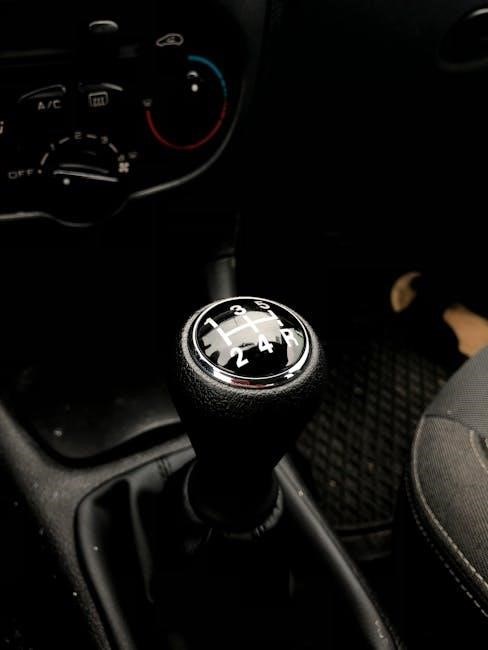
Popular Manual Transmission Wagon Models
Manual transmission wagons offer a blend of practicality and driving engagement. Classic models like the Volvo 240 and Subaru Outback, alongside modern options such as the Skoda Octavia and BMW 3 Series wagons, cater to diverse preferences. These vehicles remain popular due to their durability, fuel efficiency, and driver involvement, making them a favorite among enthusiasts seeking a balance between versatility and performance.
Classic Models
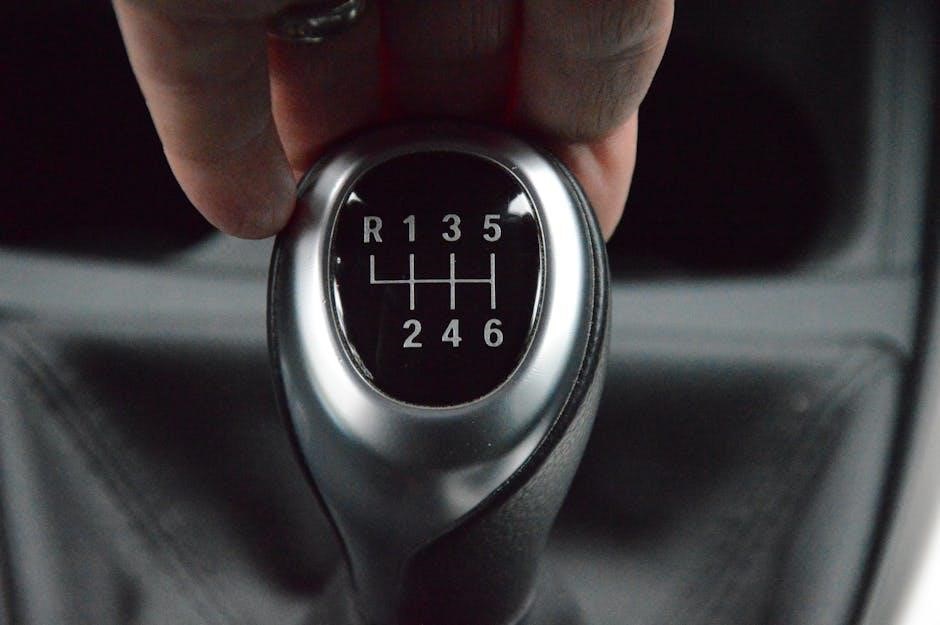
Classic manual transmission wagons, such as the Volvo 245 and Mercedes-Benz 300TD, are celebrated for their timeless design and robust build quality. These models, produced from the 1970s to the early 1990s, were known for their reliability and simplicity, making them favorites among enthusiasts. The Subaru Leone wagon, with its early all-wheel-drive system, also stands out as a pioneering model that combined off-road capability with manual transmission control. These classic wagons often feature straightforward mechanical components, appealing to those who appreciate simplicity and the joy of driving. Their durability and lower maintenance costs contribute to their enduring popularity in the used car market.
Modern Models
Modern manual transmission wagons, such as the Subaru Outback, Volvo V60, and BMW 3 Series Touring, blend sleek designs with advanced technology. These models often feature refined interiors, turbocharged engines, and all-wheel-drive systems, offering a balance of performance and practicality. The Subaru Outback, for instance, is renowned for its off-road capabilities and fuel efficiency, while the Volvo V60 emphasizes safety and luxury. BMW’s 3 Series Touring combines sporty handling with wagon versatility. These contemporary wagons cater to drivers seeking both functionality and driving enjoyment, with many offering manual transmission options alongside modern conveniences like paddle shifters and adaptive driving modes, ensuring a dynamic yet comfortable experience.
Performance-Oriented Models
Performance-oriented manual transmission wagons deliver exceptional power and agility, catering to enthusiasts who crave both versatility and speed. Models like the BMW 3 Series Touring and Audi S4 Avant showcase this blend, offering powerful engines and precise handling. These wagons often feature sport-tuned suspensions, aerodynamic designs, and advanced drivetrain technologies, ensuring a thrilling drive. The manual transmission enhances driver engagement, allowing for seamless gear shifts and optimal control. With their balance of performance and practicality, these wagons appeal to those who value driving dynamics without compromising on space and utility, making them a standout choice for performance enthusiasts seeking a versatile vehicle.

Market Trends and Consumer Preferences
Manual transmission wagons face declining popularity due to automatics, yet enthusiasts drive a niche resurgence, valuing driver engagement and unique experiences in a market dominated by convenience.
Decline in Popularity of Manual Transmissions
The popularity of manual transmission wagons has been steadily declining due to the rise of automatic and dual-clutch transmissions, which offer greater convenience and ease of use. Modern drivers, especially in urban areas, often prioritize comfort and efficiency over the engagement of manual shifting. Additionally, the increasing prevalence of traffic congestion in cities has made manual transmissions less practical for daily commuting. Furthermore, the growing trend toward electric vehicles (EVs) and automated driving technologies has shifted consumer preferences away from manual transmissions. As a result, many car manufacturers have reduced the number of manual transmission options in their lineup, focusing instead on automatic and semi-automatic systems to meet market demands.
Resurgence in Demand for Manual Wagons
Despite the decline in popularity, manual transmission wagons are experiencing a resurgence in demand, particularly among driving enthusiasts. Many purists appreciate the tactile experience and control that manual transmissions offer, making them a preferred choice for performance-driven vehicles. Additionally, the emotional connection and sense of accomplishment associated with mastering a manual gearbox have fostered a loyal following. Certain models, such as the Subaru Outback and Volvo estates, have maintained their appeal due to their blend of practicality and manual transmission options. This trend highlights a niche market where drivers value the unique characteristics of manual wagons, even as automatic and automated systems dominate the mainstream automotive landscape.
Target Audience for Manual Transmission Wagons
The primary target audience for manual transmission wagons consists of driving enthusiasts who prioritize control, performance, and the sheer joy of driving. These individuals often value the connection between the driver and the vehicle, making manual wagons a preferred choice for those who enjoy spirited driving. Additionally, outdoor enthusiasts and those requiring vehicles for towing or off-road capabilities frequently opt for manual wagons due to their durability and traction advantages. Budget-conscious buyers may also be drawn to the cost-effectiveness of manual transmissions, as they are typically more affordable than their automatic counterparts. This diverse audience reflects the versatility and enduring appeal of manual transmission wagons in various driving scenarios and preferences.

Future of Manual Transmission Wagons
Manual transmission wagons face challenges from automation and electric vehicles, yet they remain a niche for driving purists, ensuring their survival in a shifting automotive landscape.
Impact of Automation and Electric Vehicles
The rise of automatic transmissions and electric vehicles (EVs) has significantly influenced the future of manual transmission wagons. Automatics and continuously variable transmissions (CVTs) offer convenience and smooth operation, appealing to a broader audience. Meanwhile, EVs, which typically lack manual transmissions due to their unique power delivery systems, are gaining popularity. This shift has led to declining sales of manual wagons, as many consumers prioritize ease of use over driver engagement. However, manual wagons retain a niche market, especially among driving enthusiasts who value the tactile experience and control they provide. Despite the trend toward automation, manual transmissions continue to be celebrated for their performance and nostalgic appeal.
Technological Advancements in Manual Transmissions
Modern manual transmissions have evolved significantly, incorporating innovative technologies to enhance performance and efficiency. Automated rev-matching systems, for instance, ensure smoother downshifts by automatically adjusting engine speed, reducing wear on the gearbox and improving driving dynamics. Additionally, lightweight materials and optimized gear designs have improved fuel efficiency and reduced mechanical strain. Some advanced manual transmissions now feature integrated sensors and software that provide real-time feedback to drivers, helping them shift gears more effectively. These advancements aim to strike a balance between maintaining the tactile experience of manual driving and embracing modern technological improvements, ensuring manual wagons remain relevant in a rapidly changing automotive landscape.
Niche Market for Enthusiasts
Manual transmission wagons have carved out a niche market for driving enthusiasts who value precision, control, and the tactile experience of shifting gears. Despite the rise of automatic and CVT transmissions, these wagons remain popular among purists who appreciate the mechanical connection to the vehicle. Their appeal lies in the satisfaction of mastering the clutch and gearbox, offering a sense of accomplishment and engagement that automated systems often lack. Additionally, the durability and performance characteristics of manual transmissions make them a favorite for those who prioritize driving dynamics over convenience. This niche market ensures that manual wagons continue to be celebrated by those who cherish the art of driving and the unique bond between driver and machine.
Manual transmission wagons offer a unique blend of driving engagement, efficiency, and durability, appealing to both practical users and enthusiasts. Their timeless appeal endures despite modern trends.
Manual transmission wagons are celebrated for their fuel efficiency, driver engagement, and durability. They require precise driving techniques and regular maintenance to ensure optimal performance. Popular models range from classic designs to modern versions, catering to diverse preferences. Despite declining popularity due to automation, these wagons retain a niche market among enthusiasts. Their enduring appeal lies in the balance between practicality and the joy of driving, making them a cherished choice for those who value control and connection to their vehicle. This summary encapsulates the essence of manual transmission wagons, highlighting their unique benefits and lasting allure in the automotive world.
Final Thoughts on Manual Transmission Wagons

Manual transmission wagons embody a timeless blend of functionality and driving passion. While they face challenges from automation and evolving consumer preferences, their unique charm endures. For enthusiasts, the tactile experience of shifting gears and the sense of control remain irreplaceable. As the automotive world embraces new technologies, manual wagons carve out a niche, appealing to those who cherish the art of driving. Their legacy is rooted in durability, efficiency, and driver engagement, ensuring they remain a cherished option for years to come, even as the market evolves. These wagons stand as a testament to the enduring joy of the driving experience.
